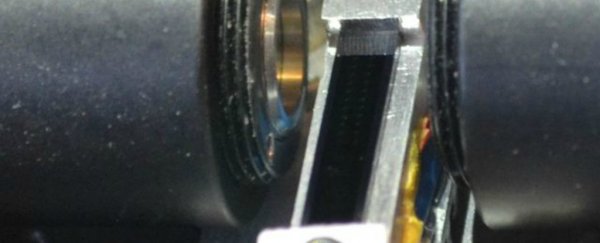You probably don't give them much thought, but we owe a whole lot to atomic clocks, because these insanely accurate devices are responsible for synchronising time all over the world.
The clocks in our phones and computers are all kept in sync by atomic clocks, and satellites use them to communicate with one another, meaning we couldn't have GPS - that means no Google Maps - without them. They also have the power to measure on ultra-small scales, allowing researchers to answer fundamental questions about the building blocks of the Universe.
With so much riding on them, it's no surprise that researchers are constantly trying to improve atomic clocks to make them smaller, more reliable and even more accurate, which is exactly what scientists from the University of California, Los Angeles just did with their newly announced optical clock that can accurately measure to 270 quintillionths of a second.
Before we go into how these clocks work, let's put that ridiculously small number into perspective with words. One quintillionth is 1 x 10-18, or 0.000000000000000001. According to the team, previous atomic clocks were accurate "to 'only' within a tenth of trillionths of a second, or one times 10 to the negative 13th power".
That's a pretty big upgrade, so what's changed?
Well, the team says that normal atomic clocks work by recording the natural frequencies of atoms when they're exposed to radiation - typically microwave radiation. These frequencies are expressed in a series of vertical lines of light that are picked up and translated by an instrument to give a reading of time.
The new optical clock, on the other hand, uses pulses of light to record these frequencies - a much faster approach than previous methods.
Besides the clock's astonishing accuracy, one of the most important new features is its size. Before now, optical clocks required a system about as big as a desktop computer, but the new clock can fit perfectly on top of a silicon chip, measuring in at a mere 1 cubic centimetre in diameter.
While little else is known about the inner workings of the device, the researchers are quick to list off all of its potential uses. "If incorporated with other technologies into infrared telescope observatories, this device can enable the detection of Earth-like planets and celestial objects 100 times smaller than that, which was previously impossible," says UCLA engineer Shu-Wei Huang.
"Measuring the time it takes for a pulse of light to reflect from an object and return back to us also tells us a distance," says another of the team, Chee Wei Wong. "This could help in precision laser distance ranging, such as in sensing for self-driven automobiles and aerial vehicles."
Additionally, the clock could be used to understand fundamental constants that explain different aspects of the Universe by allowing researchers to measure how electrons and elementary particles interact.
It could also potentially allow researchers to measure space and time to analyse both tiny objects like atoms and distant objects like planets and stars, though only time will tell the device's true impact.
The team's findings were published in Science Advances.
